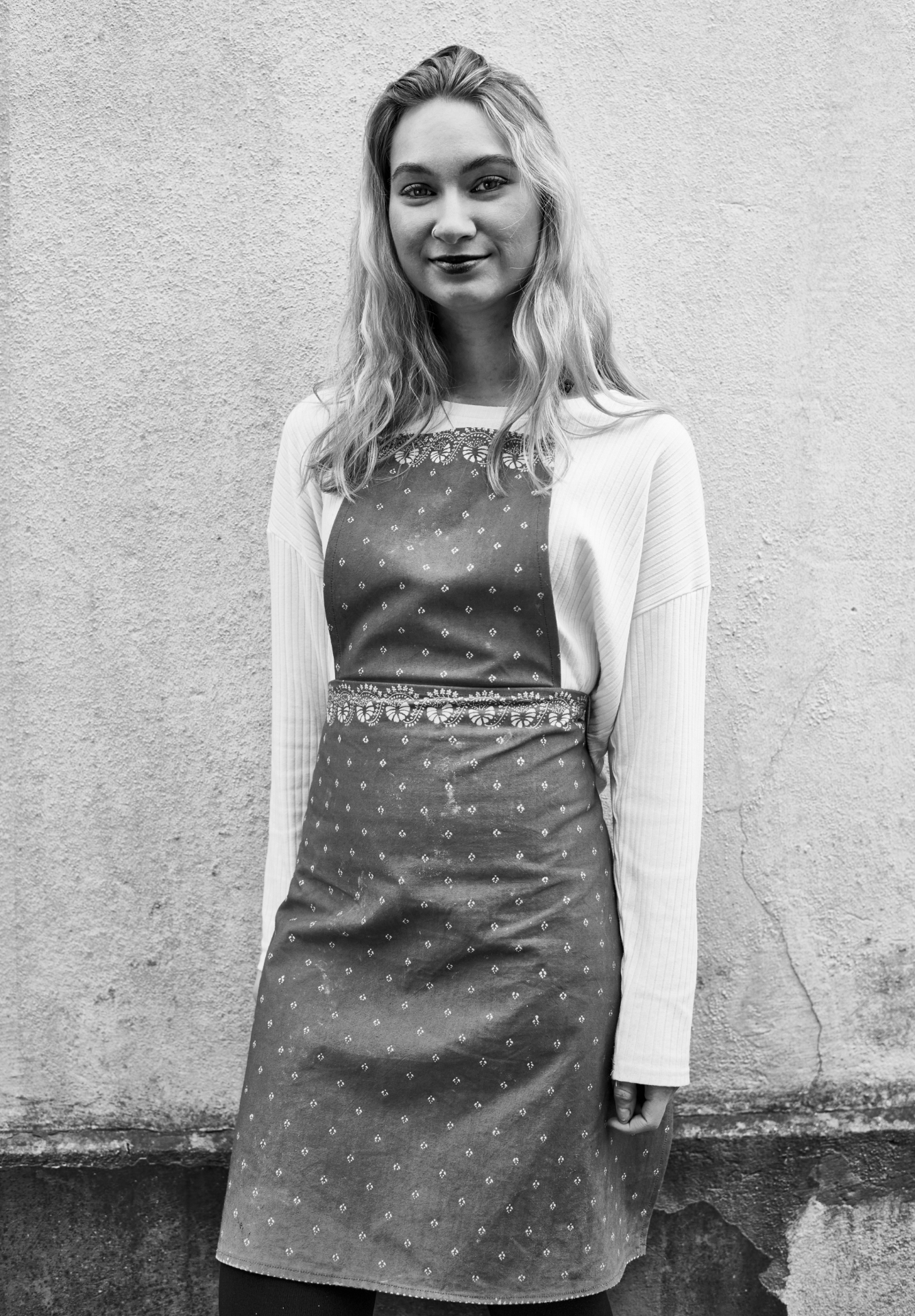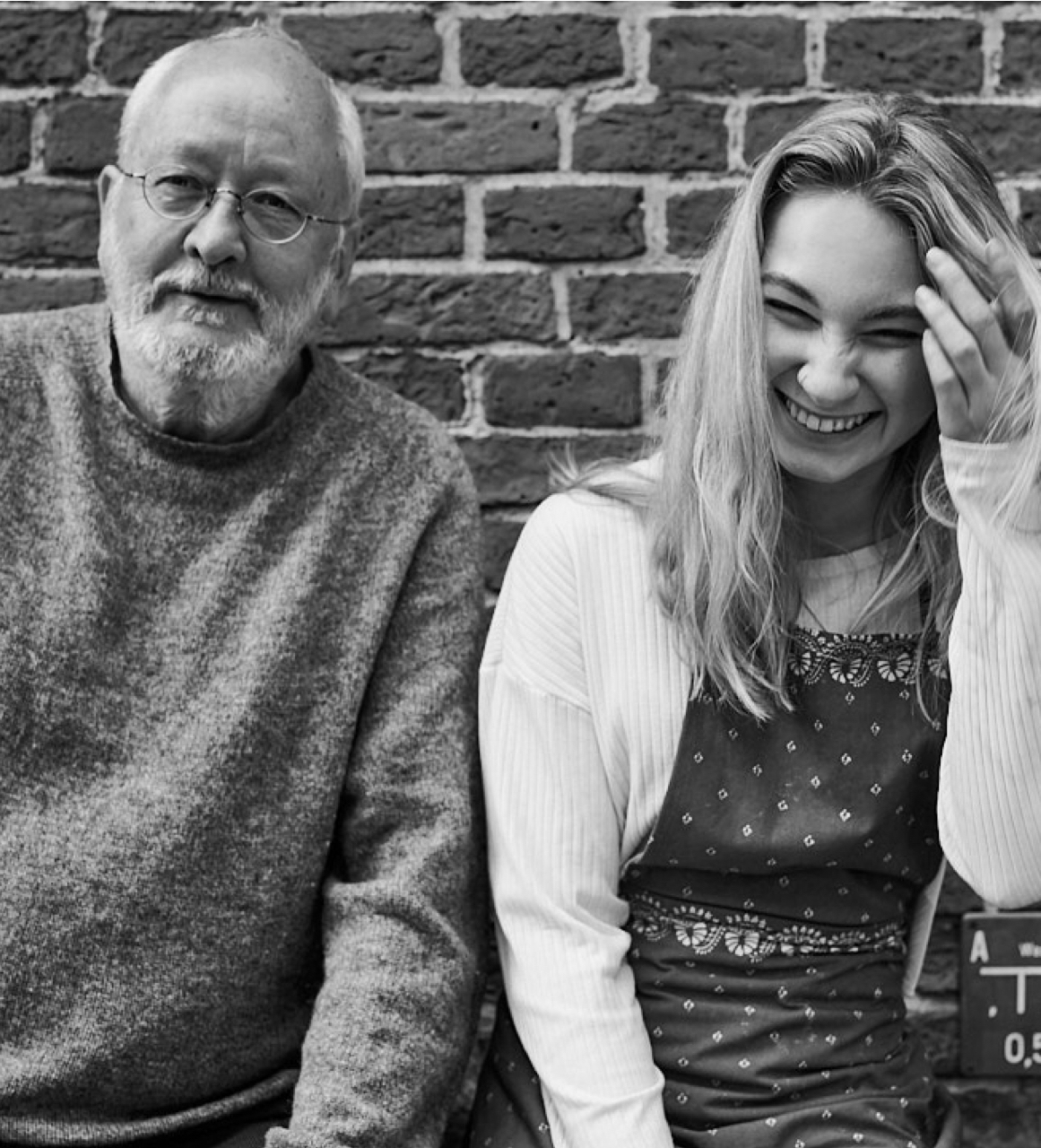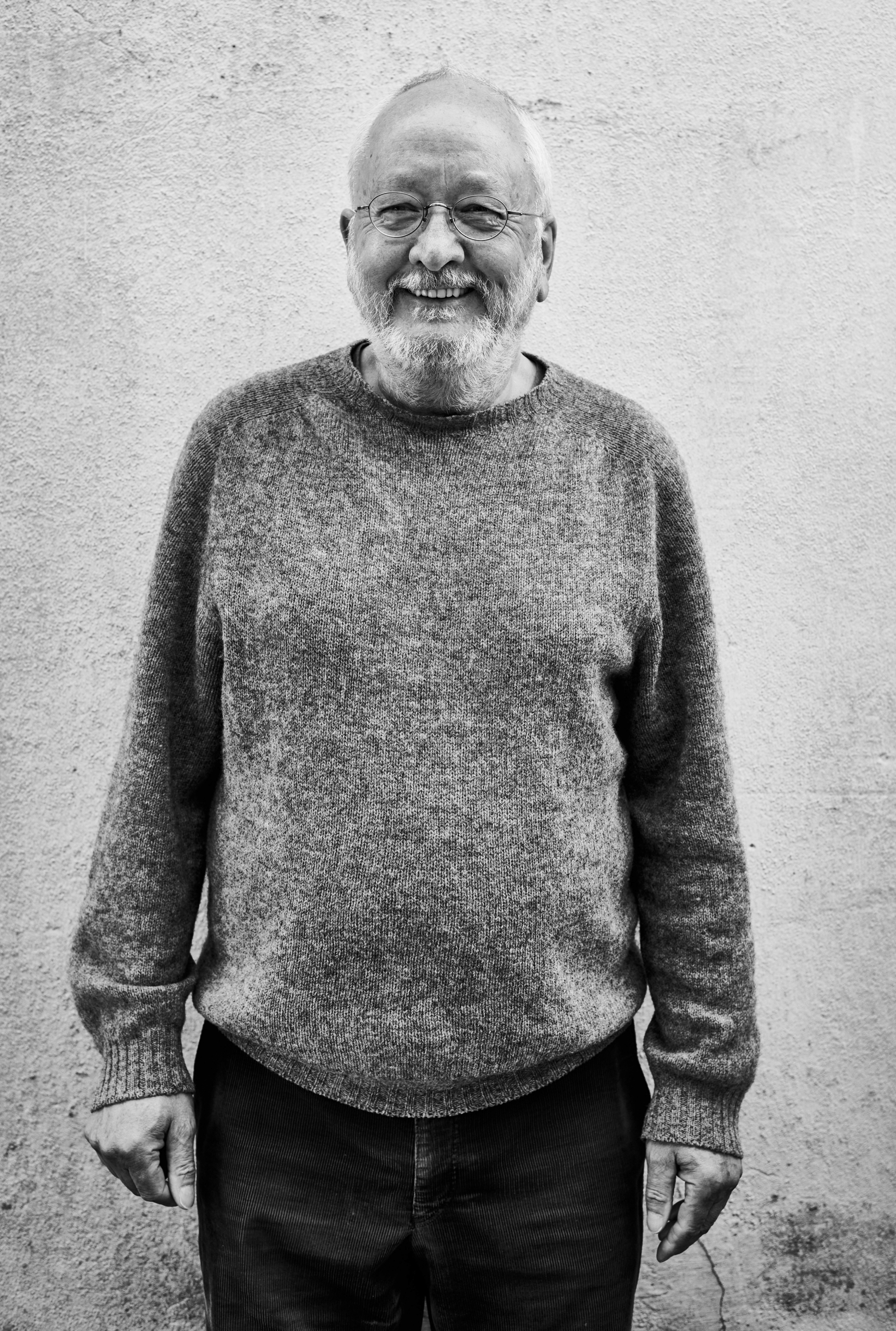Mr Stark, please tell us something about the beginnings of Blaudruckerei Jever and how you came to the profession.
Georg Stark: I founded Blaudruckerei Jever in 1985. I had studied history and then ended up in the small town of Jever for private reasons. I was interested in history but didn’t know exactly where to go with it. Then one evening I got into a conversation with the old gentlemen of Jever. They recommended that I try indigo dyeing because of my interest in traditional crafts. That intrigued me right away, and so I started to teach myself everything I could.
At first, I had no idea – neither about textiles nor about the technique. I was fresh out of university and had lots of crazy ideas in my head. Luckily, I found recipe books in Lüneburg, in an old Blaudruck shop, and these deepened my education. Even then, there were hardly any master craftsmen left to whom I could turn for help. In Germany, crafts went out of business with the First World War. As industry grew up, the traditional crafts were destroyed. I was still able to approach two masters, men who were over ninety years old, but they turned me down. They didn’t want to have anything to do with the work anymore or with the physical effort involved. In the end, everything was “learning by doing”.
Early on, I only had four printing blocks, and these were not even mine but were loaned by museums in the region. But the craft of indigo dyeing still had a very good reputation despite its decline, and the radio and NDR Television ran a report on the founding of my workshop. Many people became aware of me as a result. They stopped by and brought me many old printing blocks. This made the craft more and more interesting for me. My own vision widened – until then the textile sector and things like trade with India had been completely unknown to me. So indigo dyeing became my professional livelihood, and it went surprisingly well.
How has the craft developed in recent years?
Georg Stark: The craft itself did not evolve at first because my focus was entirely on authenticity and originality – the way the craft was practised two hundred to three hundred years ago.
What has changed is my view of indigo dyeing. Many still think of Blaudruck as just apron fabric: old fabrics, rustic textiles, a bit fusty and traditional. I, too, had to learn that there was much more to it. For example, I learned that the craft came to Europe through trade with India and China about four hundred years ago. I was able to verify this by looking at print samples. What is often misunderstood as the “onion pattern” is actually the pomegranate. It is a very popular pattern with many customers. In the meantime, we’ve learned that trade in fabrics, silk, porcelain and spices was already taking place in Roman times.
People often think that we work with typical regional patterns, that we print traditional costumes. But I don’t think too highly of “traditional” costumes. In my opinion, they were often inauthentic fakes originating in imperial era. Germany was getting big at the time, so Germany’s past had to look big, too. But over the years I’ve learned that most of this textile tradition was of Indian origin. India is also the motherland for design and for dyeing. We have been using their innovations for years. So, globalization is not a new phenomenon.
Ms Schumacher, how did you come to take over the Jever Blaudruck workshop after completing your fashion studies?
Sabrina Schuhmacher: I studied tailoring and fashion design in Hannover. I had to design a final collection in order to graduate last year. My theme for it was the northern German region and my ties to it. By chance, I came across the Blaudruckerei Jever. I then designed a few pieces with indigo print fabrics and got into conversation with Mr Stark. At some point he mentioned that he was looking for a successor. At first, it was only planned that I would design a few cuts and garments for him. Then I quickly realized that indigo dyeing was something very special that I wanted to pursue. I saw a lot of potential right from the start, just during my first collection development. It is a craft full of possibilities.
"Indigo dyeing does not lend itself to mass production. It needs a lot of patience."
Do you have plans to develop textile clothing as well?
Georg Stark: Personally, I have always neglected the field of clothing. It never played a role in production or sales. But that may be changing now.
Sabrina Schuhmacher: Fashion design is my field, my passion. Of course, one must be careful to consider the customer base. I will continue what Mr Stark has offered. It is important to me to remain historical as well; that is the essence of indigo dyeing. But I also see potential in clothing. We could provide the double service here: both the fabric and the dress. We will see what the future brings.
What is special about indigo dyeing?
Georg Stark: 99 percent of our customers are ordinary citizens who do not come from the textile industry. They are here for a holiday, for example. They see our workshop and are interested in us. Most of them have never heard of Blaudruck and have many questions. Since we have a show workshop, we can explain and demonstrate a lot. This creates a close relationship between the customers and us as craftsmen – but also a greater understanding of the techniques and the quality of Blaudruck printing.
Sabrina Schuhmacher: Of course this also creates a bond between the customers and the Blaudruck process itself. This communication creates a relationship with purchased fabrics, even if you then have them lying around at home. It’s a different feeling than when you buy a tablecloth in a random shop. That’s also where I see the opportunity for handcraft in the future: that people realize that such a personal association has a great value. There is always something new to discover in crafts. You never stop learning. In addition, Blaudruck is not that well known. There hasn’t been much experimentation yet. Only a few people think of working with this technique. I felt the same way about my final collection. It was more by chance that I discovered it, and now I think it’s great. I can imagine that it would be the same for many.

What experiences have you had working with fashion designers?
Georg Stark: Once we had the designer Timo Martens here. He is known for his work with almost forgotten craftsmanship. Otherwise, it’s rather rare. But the proximity to Bremen and to the city’s University of the Arts would probably be an opportunity for a great cooperation. They have a great design department.
Recently, indigo dyeing was declared an “intangible cultural heritage” by UNESCO. How did that come about, and has much changed since then?
Georg Stark: The call from UNESCO reached me through the museum association. We – I – and a workshop based on the Lüneburg Heath were then commissioned to submit the application for all German practitioners of Blaudruck. We established three principles that define the practice as an intangible cultural heritage. These criteria are aimed at indigo printers or a workshop. The first criterion is indigo dyeing, whether natural or synthetic materials are used. Printing in yellow or red is also allowed, provided that indigo is also used as a dye. Second, it must be hand printing or reserve printing – i.e., not colour printing or chemical colour printing. Third, there must be a component of historic printing sites. For the period from the mid-seventeenth century to the end of the nineteenth century, there must be a stock of printable old models. For example, we have about 1,100 models in our workshop. In the meantime, we have become a World Heritage site. UNESCO has a good reputation, which has helped us a lot. The honour is like a seal of quality.
The whole thing went through the press, we got inquiries from magazines, and many came to our workshop as a result. It gave us a chance to tell the world: we are not an out-dated, dusty, Frisian craft that’s snoozing away here – quite the opposite.
What is your vision for the future of indigo dyeing?
Sabrina Schuhmacher: Fashion training hardly considers craft and craft techniques. That should be changed. When design and craft meet, new and very exciting things can happen. It is important that both parties meet at eye level, because crafts are often looked down upon. This cooperation is needed to guarantee the future of indigo dyeing.
There are also new digital innovations, such as 3D printing, that one would have to try out. In general, I am open to it. I just think that the digital should not get out of hand and that one should not lose sight of history. Otherwise Blaudruck loses its magic. The technique carries so much history. It’s not the same when you work with fabric from the 3D printer that someone has just programmed in.
Georg Stark: Another problem for the future is the lack of mould carvers. There are still two working, but they are also quite old. In the meantime, elaborate orders are being turned down because they can no longer do the work physically. We are on a slippery slope.
Schuhmacher: That would be another way to use techniques like the 3D printer. Maybe one could print moulds in the future.
Stark: Or have them carved in India, the motherland of indigo printing. In this way, support from the technique’s country of origin could again give new impetus here, because in India the craft is still very active and alive. The craftsmen there can still work much more intricate designs than the local mould carvers here.


